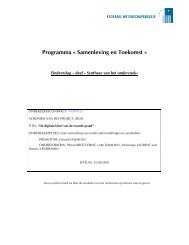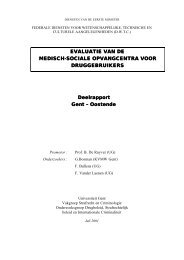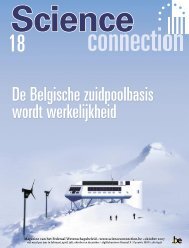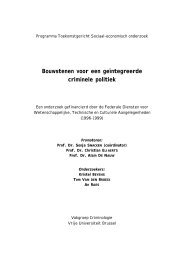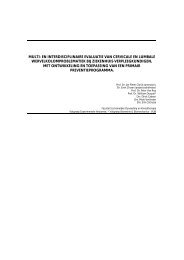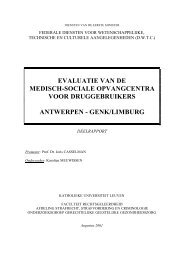Proposition pour améliorer la méthodologie de calcul des indices ...
Proposition pour améliorer la méthodologie de calcul des indices ...
Proposition pour améliorer la méthodologie de calcul des indices ...
You also want an ePaper? Increase the reach of your titles
YUMPU automatically turns print PDFs into web optimized ePapers that Google loves.
158<br />
TABLE DES MATIERES<br />
Introduction 4<br />
1. Critique <strong>de</strong> <strong>la</strong> <strong>méthodologie</strong> actuelle 5<br />
2. <strong>Proposition</strong>s 7<br />
3. Base conventionnelle et pondération externe 9<br />
3.1 Simplification <strong>de</strong> <strong>la</strong> base conventionnelle sectorielle 9<br />
3.2 Pondération externe 13<br />
3.3 E<strong>la</strong>rgissement aux conventions d’entreprise 15<br />
3.4 Conclusions 17<br />
4. L’indice <strong>de</strong>s sa<strong>la</strong>ires conventionnels au niveau d'une unité conventionnelle 18<br />
4.1 Pondération interne 18<br />
4.1.1 Méthodologie du CBS 19<br />
4.1.2 Les sources d’information en Belgique 20<br />
4.1.3 Simplification <strong>de</strong>s grilles barémiques 25<br />
4.1.4 Indicateur statistique du sa<strong>la</strong>ire brut conventionnel <strong>de</strong> base 28<br />
4.1.5 Conclusions 30<br />
4.2 Intégration <strong>de</strong> certaines primes dans le <strong>calcul</strong> <strong>de</strong> l’indice 33<br />
4.2.1 Les primes linéaires 33<br />
4.2.2 Les primes non linéaires 39<br />
5. L'indice <strong>de</strong>s durées <strong>de</strong> travail conventionnelles au niveau d'une unité<br />
40<br />
conventionnelle<br />
5.1 Une information explicite 40<br />
5.2 L’indice <strong>de</strong>s durées <strong>de</strong> travail conventionnelles 40<br />
5.2.1 Correction <strong>de</strong> l’indice <strong>de</strong>s sa<strong>la</strong>ires conventionnels <strong>de</strong>s employés 41<br />
5.2.2 Indice synthétique 41<br />
5.3 Calcul standardisé <strong>de</strong> <strong>la</strong> durée <strong>de</strong> travail annuelle 41<br />
5.3.1 Durée <strong>de</strong> travail conventionnelle 42<br />
5.3.2 Nombre <strong>de</strong> jours ouvrés sur l’année 43<br />
5.3.3 Calcul standardisé 44<br />
Conclusions et recommandations 46<br />
Annexe 1. Tableaux et traitements statistiques<br />
1.1 Base conventionnelle<br />
(commissions paritaires et sous-commissions paritaires)<br />
1.2 Pondération externe 54<br />
1.3 Représentativité sectorielle 56<br />
1.4 Intégration <strong>de</strong>s entreprises 57<br />
1.4.1 Distribution <strong>de</strong>s sa<strong>la</strong>riés selon le type <strong>de</strong> régu<strong>la</strong>tion<br />
(sectorielle vs entreprise)<br />
57<br />
1.4.2 Entreprises d'au moins 3000 travailleurs 58<br />
1.4.3 Pondération <strong>de</strong>s entreprises au sein <strong>de</strong>s (sous) commissions paritaires 59<br />
1.5 Synthèse <strong>de</strong>s caractéristiques <strong>de</strong>s c<strong>la</strong>ssifications et <strong>de</strong>s variables<br />
60<br />
exploitables dans l'enquête SES<br />
1.6 Pondération interne : exploitation <strong>de</strong> l'enquête SES 63<br />
1.6.1 I<strong>de</strong>ntification <strong>de</strong> <strong>la</strong> commission paritaire sur base <strong>de</strong> <strong>la</strong> c<strong>la</strong>ssification <strong>de</strong>s 64<br />
51



